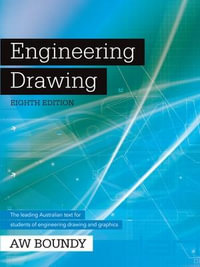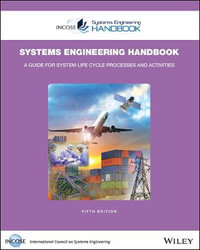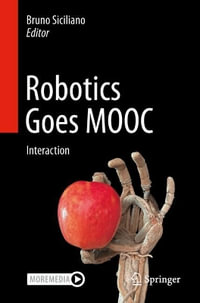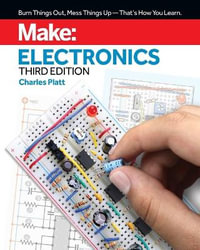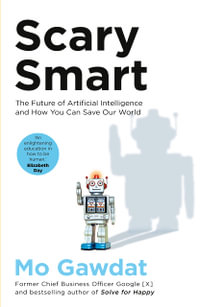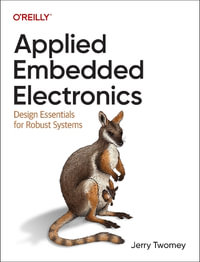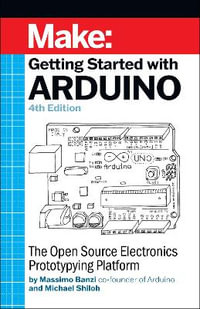List of Contributors
About the Editors
PART ONE PERVASIVE COMPUTING AND SYSTEMS
1 Introduction
Mohammad S. Obaidat and Isaac Woungang
1.1 Pervasive Computing and Its Significance
1.2 Research Trends in Pervasive Computing and Networking
1.3 Scanning the Book
1.4 Target Audience
1.5 Supplementary Resources
1.6 Acknowledgments
References
2 Tools and Techniques for Dynamic Reconfiguration and
Interoperability of Pervasive Systems
Evens Jean, Sahra Sedigh, Ali R. Hurson, and Behrooz A.
Shirazi
2.1 Introduction.
2.2 Mobile Agent Technology
2.3 Sensor Networks
2.4 Collaboration and Interoperability Among Sensor Networks
2.5 Applications
2.6 Conclusion
References
3 Models for Service and Resource Discovery in Pervasive
Computing
Mehdi Khouja, Carlos Juiz, Ramon Puigjaner, and Farouk
Kamoun
3.1 Introduction
3.2 Service Oriented Architecture
3.3 Industry and Consortia Supported Models for Service
Discovery
3.4 Research Initiatives in Service Discovery for Pervasive
Systems
3.5 Conclusions
References
4 Pervasive Learning Tools and Technologies
Neil Y. Yen, Qun Jin, Hiroaki Ogata, Timothy K. Shih, and Y.
Yano
4.1 Introduction
4.2 Pervasive Learning: A Promising Innovative Paradigm
4.3 Emerging Technologies and Systems for Pervasive Learning
4.4 Integration of Real-World Practice and Experience with
Pervasive Learning
4.5 Nature of Pervasive Learning and Provision of Well-Being in
Education
4.6 Conclusion
References
5 Service Management in Pervasive Computing
Environments
Jiannong Cao, Joanna Siebert, and Vaskar
Raychoudhury
5.1 Introduction
5.2 Service Management in Pervasive Computing Environments
5.3 Techniques for Service Management in PvCE
5.4 Service Composition
5.5 Conclusions
References
6 Wireless Sensor Cooperation for a Sustainable Quality
of Information
Abdelmajid Khelil, Christian Reinl, Brahim Ayari, Faisal
Karim Shaikh, Piotr Szczytowski, Azad Ali, and Neeraj Suri
6.1 Introduction
6.2 Sensing the Real World
6.3 Inter-Sensor Cooperation
6.4 Mobile Sensor Cooperation
6.5 Cooperation Across Mobile Entities
6.6 Inter-WSN Cooperation
6.7 Conclusions and Future Research Directions
References
7 An Opportunistic Pervasive Networking Paradigm:
Multi-Hop Cognitive Radio Networks
Didem Gozupek and Fatih Alagoz
7.1 Introduction
7.2 Overview of Multi-Hop Cognitive Radio Networks MAC Layer
7.3 Proposed Mac Layer Protocols
7.4 Open Issues
7.5 Conclusions
References
8 Wearable Computing and Sensor Systems for
Healthcare
Franca Delmastro and Marco Conti
8.1 Introduction
8.2 The Health Body Area Network
8.3 Medical and Technological Requirements of Health Sensors
8.4 Wearable Sensors for Vital Signals Monitoring
8.5 Wearable Sensors for Activity Recognition
8.6 Sensors and Signals for Emotion Recognition
8.7 Intra-BAN Communications in Pervasive Healthcare Systems:
Standards and Protocols
8.8 Conclusions
References
9 Standards and Implementation of Pervasive Computing
Applications
Daniel Cascado, Jose Luis Sevillano, Luis Fernandez-Luque,
Karl Johan Grottum, L. Kristian Vognild, and T. M.
Burkow
9.1 Introduction
9.2 Wireless Technologies and Standards
9.3 Middleware
9.4 Case Studies
References
PART TWO PERVASIVE NETWORKING SECURITY.
10 Security and Privacy in Pervasive Networks
Tarik Guelzim and Mohammad S. Obaidat
10.1 Introduction
10.2 Security Classics
10.3 Hardening Pervasive Networks
10.4 Privacy in Pervasive Networks
10.5 Conclusion
References
11 UnderstandingWormhole Attacks in Pervasive Networks
Isaac Woungang, Sanjay Kumar Dhurandher, and Abhishek
Gupta
11.1 Introduction
11.2 A Wormhole Attack
11.3 Severity of a Wormhole Attack
11.4 Background
11.5 Classification of Wormholes
11.6 Wormhole Attack Modes
11.7 Mitigating Wormhole Attacks
11.8 Discussion of Some Mitigating Solutions to Avoid Wormhole
Attacks
11.9 Conclusion and Future Work
References
12 An Experimental Comparison of Collaborative Defense
Strategies for Network Security
Hao Chen and Yu Chen
12.1 Introduction
12.2 Background
12.3 Small-World Network Based Modeling Platform
12.4 Internet Worm Attack and Defense
12.5 Experiments and Performance Evaluation
12.6 Conclusions
References
13 Smart Devices, Systems and Intelligent Environments
Joaquin Entrialgo and Mohammad S. Obaidat
13.1 Introduction
13.2 Smart Devices and Systems
13.3 Intelligent Environments
13.4 Trends
13.5 Limitations and Challenges
13.6 Applications and Case Studies
13.7 Conclusion
References
PART THREE PERVASIVE NETWORKING AND COMMUNICATIONS.
14 Autonomic and Pervasive Networking
Thabo K. R. Nkwe, Mieso K. Denko, and Jason B. Ernst
14.1 Introduction
14.2 Ubiquitous/Pervasive Networks
14.3 Applying Autonomic Techniques to Ubiquitous/Pervasive
Networks
14.4 Self-* (star) In Autonomic and Pervasive Networks
14.5 Autonomic and Pervasive Networking Challenges
14.6 Conclusions and Future Directions
References
15 An Adaptive Architecture of Service Component for
Pervasive Computing
Fei Li, Y. He, Athanasios V. Vasilakos, and Naixue
Xiong
15.1 Introduction
15.2 Motivation
15.3 An Overview of the Delaying Adaptation Tool
15.4 Case Study
15.5 Related Work
15.6 Conclusions
References
16 On Probabilistic k-Coverage in Pervasive Wireless
Sensor Networks
Habib M. Ammari
16.1 Introduction
16.2 The Coverage Problem
16.3 Coverage Configuration Problem
16.4 Stochastic k-Coverage Protocol
16.5 Conclusion
References
17 On the Usage of Overlays to Provide QoS Over IEEE
802.11b/g/e Pervasive and Mobile Networks
Luca Caviglione, Franco Davoli, and Piergiulio
Maryni
17.1 Introduction
17.2 A Glance at P2P Overlay Networks and QoS Mechanisms
17.3 Design of Overlays to Support QoS
17.4 Performance Evaluation
17.5 Conclusions and Future Developments
Appendic I. The Distributed Algortihm for Bandwidth
Management
References
18 Performance Evaluation of Pervasive Networks Based on
WiMAX Networks
Elmabruk Laias and Irfan Awan
18.1 Introduction
18.2 IEEE 802.16 Architecture and QoS Requirements
18.3 Related Work
18.4 Proposed QoS Framework
18.5 Simulation Experiments and Numerical Results
18.6 Summary
References
19 Implementation Frameworks for Mobile and Pervasive
Networks
Bilhanan Silverajan and Jarmo Harju
19.1 Introduction
19.2 Correlating Design to Implementations
19.3 Challenges for Implementation Frameworks
19.4 State of the Art in Implementation Frameworks
19.5 Current Frameworks Research for Network Protocols and
Applications
19.6 Evaluating Frameworks and Implementations
19.7 Conclusion
References
Index

